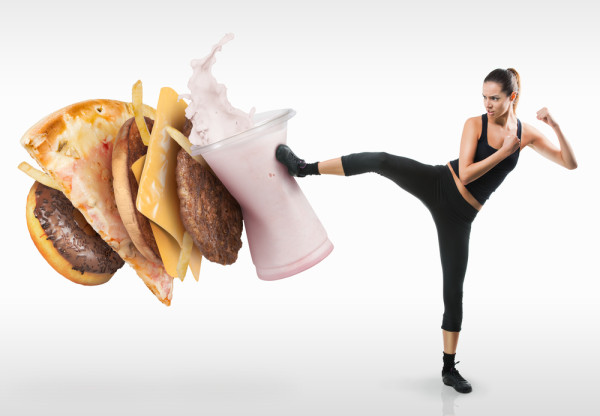Sponsored post by Retrofit Weight Loss
There’s no question about it: Losing weight is hard. Whether you’re trying to shed baby weight, get back in shape after an illness, or just get rid of a few extra pounds, there are many things that can stall a diet. Here are the top 3 most common things that people get wrong when they are trying to lose weight, and advice for overcoming these frustrating obstacles.
1. You lose weight too quickly.
Shedding more than 1 to 2 pounds per week should raise a red flag for dieters, according to the National Institutes of Health. Yes, the results might be encouraging, but those pounds are more likely to come back. “Losing too much at one time is a sure sign of a fad diet,” says Amy Margulies, lead registered dietitian at Retrofit Weight Loss. “That kind of weight loss means the dieter is likely depriving their body of nutrients and will risk gaining the weight back as soon as they revert to old eating habits.” To avoid rapid, unsustainable weight loss, Margulies recommends that dieters make two small changes:
- Set up a consistent eating plan of three meals and two snacks per day.
- Measure your breakfast so you know just how many calories you are consuming.
2. You’re a little calorie naive.
Beginning dieters know they need to cut calories, but they likely don’t know just how many calories are in their favorite foods. More often than not, they are underestimating the calorie counts in their meals. For example, if the portion size for cereal is 3/4 cup but you’re pouring yourself a bowlful each morning, you won’t have a realistic idea of just how many calories you’re consuming. Margulies recommends following a set diet and being conscious of calories for three full weeks. “That should give most dieters enough time to learn to gauge the proper portion sizes and calorie counts of their favorite foods,” she says.
3. You skip meals
It’s tempting to fall into the mindset that skipping a meal or snack means consuming fewer calories. “Skipping a meal leads to eating a larger meal later,” Margulies says. “And that can affect a person’s perception of her portions. By eating 3 meals and 2 snacks during the day, those meals will be smaller and will leave the dieter feeling more satisfied with a smaller portion.” Margulies also notes that breakfast is the worst meal of the day to pass up. Studies have shown that those who don’t eat breakfast are heavier than those who do.
The key to safe, long-lasting weight loss is making gradual changes that become healthy habits. Avoiding these common pitfalls will help you achieve your weight loss goals safely and will make you more likely to keep weight off over time. As always, when roadblocks or challenges arise, it’s helpful to seek out a nutritionist, dietitian, or behavior coach to get personalized advice on how to overcome those plateaus.
Also Read:

